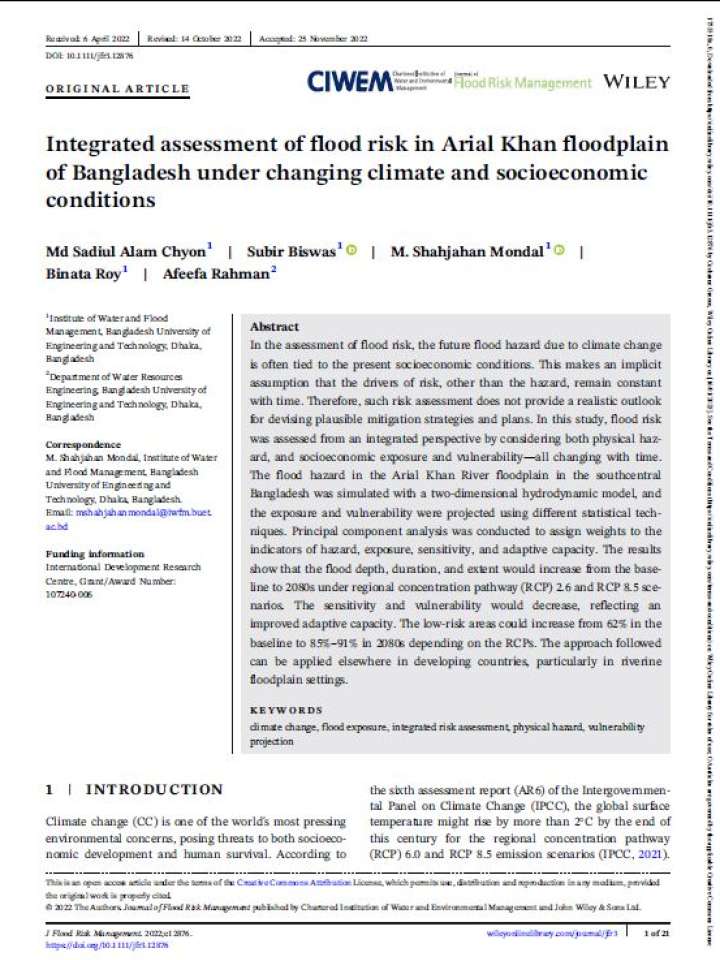Integrated assessment of flood risk in Arial Khan floodplain of Bangladesh under changing climate and socioeconomic conditions
In this study, flood risk was assessed from an integrated perspective by considering both physical hazard, and socioeconomic exposure and vulnerability—all changing with time. In the assessment of flood risk, the future flood hazard due to climate change is often tied to the present socioeconomic conditions. This makes an implicit assumption that the drivers of risk, other than the hazard, remain constant with time. Therefore, such risk assessment does not provide a realistic outlook for devising plausible mitigation strategies and plans.
The flood hazard in the Arial Khan River floodplain in the southcentral Bangladesh was simulated with a two-dimensional hydrodynamic model, and the exposure and vulnerability were projected using different statistical techniques. Principal component analysis was conducted to assign weights to the indicators of hazard, exposure, sensitivity, and adaptive capacity. The results show that the flood depth, duration, and extent would increase from the baseline to 2080s under regional concentration pathway (RCP) 2.6 and RCP 8.5 scenarios. The sensitivity and vulnerability would decrease, reflecting an improved adaptive capacity. The low-risk areas could increase from 62% in the baseline to 85%–91% in 2080s depending on the RCPs. The approach followed can be applied elsewhere in developing countries, particularly in riverine floodplain settings.
Explore further
